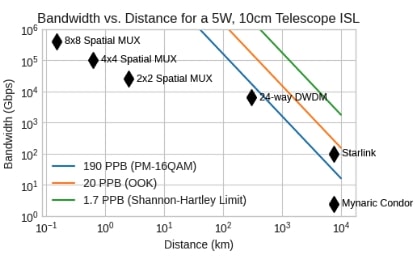Google Project Suncatcher is a new research moonshot to one day scale machine learning in space. Working backward from this potential future, they are exploring how an interconnected network of solar-powered satellites, equipped with our Tensor Processing Unit (TPU) AI chips, could harness the full power of the Sun. The next step is a learning mission in partnership with Planet to launch two prototype satellites by early 2027 that will test our hardware in orbit, laying the groundwork for a future era of massively-scaled computation in space.
Google is developing a scalable compute system for machine learning in space, using fleets of satellites equipped with solar arrays, inter-satellite links using free-space optics,…
Google Project Suncatcher is a new research moonshot to one day scale machine learning in space. Working backward from this potential future, they are exploring how an interconnected network of solar-powered satellites, equipped with our Tensor Processing Unit (TPU) AI chips, could harness the full power of the Sun. The next step is a learning mission in partnership with Planet to launch two prototype satellites by early 2027 that will test our hardware in orbit, laying the groundwork for a future era of massively-scaled computation in space.
Google is developing a scalable compute system for machine learning in space, using fleets of satellites equipped with solar arrays, inter-satellite links using free-space optics, and Google tensor processing unit (TPU) accelerator chips. To facilitate high-bandwidth, low-latency inter-satellite communication, the satellites would be flown in close proximity. We illustrate the basic approach to formation flight via a 81-satellite cluster of 1 km radius, and describe an approach for using high-precision ML-based models to control large-scale constellations. Trillium TPUs are radiation tested. They survive a total ionizing dose equivalent to a 5 year mission life without permanent failures, and are characterized for bit-flip errors. Launch costs are a critical part of overall system cost. A learning curve analysis suggests launch to low-Earth orbit (LEO) may reach less than $200/kg by the mid-2030s.
$200 per kilogram would mean about $5 million for SpaceX Falcon 9 launching about 25 tons into orbit. Currently, those are sold for $67-70 million per launch. Falcon 9 launch price $3,600/kg is based on Falcon 9 reusable configuration (less payload per launch for reusable). SpaceX Falcon Heavy is half of the cost per kilogram versus Falcon 9. However, reusability for the first stage means that the cost for SpaceX (not the price they charge others) is about $15 million per launch which is $800 per kilogram. SpaceX does not launch Falcon Heavy that much but SpaceX could achieve a cost of $400 per kilogram if they chose to use it a lot.
The SpaceX Superheavy Starship should have full reusability. This will have 100 ton and then 200 ton reusable payload. The 200 ton payload would hit $200 per kilogram is the price was $40 million per launch. SpaceX could reach an internal cost like that in 2027 with three to five reuses of the first and second stage. SpaceX can get the internal cost to $50/kilogram with ten fully reusable launches per vehicle.
Google is assuming 10× reuse and SpaceX having margins of 75%. Launch price to customers would drop to under $250/kg. I think around 2035 , Google is correct. SpaceX would need to go to having an abundance of Starship launch after launching 50,000 V3 communication satellites over the first four years of Starship use. The margins they charge will come down to 75% and the reuse level will go towards 100X.
The Google tensor processing unit (TPU) accelerator chips on a constellation of solar-powered satellites, with size and number of TPUs per satellite determined by both economic and engineering considerations. Google envisions launching the satellites into dawn-dusk, sun-synchronous low-Earth orbit (LEO) to maximize power generation while minimizing latency of ground communications and launch cost. To enable ultra-high bandwidth, low-latency data transfer between satellites, they will fly close together and communicate via free-space optics inter-satellite links (FSO ISLs). An ML-based flight control model enables the satellites to maintain close flight proximity while avoiding collisions. Eventually, optical links will also be needed for high-bandwidth communication with the ground, but for a pilot project, radio suffices, avoiding the challenges of overcoming atmospheric interference.
The Starcloud proposal is for monolithic data centers in space where individual spacecraft significantly exceed the size of any current or planned launch vehicle. Thales Alenia Space proposes building a constellation of 13 satellites measuring a combined 200 meter-by-80 meter, and with a total data processing power of around 10 megawatts (MW). That’s equivalent to a current medium-sized, ground-based data center, with some 5,000 servers. Last summer, a European Commission-funded feasibility study into orbiting data centers published its results. The Ascend report by carried out by Thales Alenia Space – a joint venture between French and Italian aerospace groups Thales and Leonardo was thinking 2037 might be when they could commercially do it.
Google proposed approach would instead rely on arrays of smaller satellites. This more modular design would provide ample opportunity to scale to the terawatts of compute capacity that could fit within the dawn-dusk sun-synchronous low-earth orbital band.
The required inter-satellite communication bandwidth, the dynamics and control of large, tightly-clustered satellite formations, the radiation tolerance of TPUs, and economic feasibility given expected future launch costs. Other significant challenges such as on-orbit reliability and repair, high-bandwidth ground communications, and thermal management are also discussed in the Google paper.
Inter-satellite communication bandwidth is not a show stopping problem. Various radiation tolerance and management approaches are far more advanced and more proven than is commonly known. Launch costs depend upon SpaceX Superheavy Starship achieving full rapid reusability.
The ISC order of 10 Tbps is achievable by using Commercial Off-The-Shelf (COTS) Dense Wavelength Division Multiplexing (DWDM) transceiver technology, similar to that used in terrestrial data centers. The primary challenge is that such equipment requires significantly higher received optical power levels, on the order of hundreds of microwatts, compared to the ∼1 μW levels typical for traditional long-range ISLs. These power levels can be achieved by drastically reducing the inter-satellite distance. Since for distances larger than the Fresnel limit, received power scales with the inverse square of the distance due to beam divergence, flying the satellites in close formation (hundreds of kilometers, or less) provides ample power to close the link budget for high bandwidth COTS transceiver.

Google V6e Trillium Cloud TPU with its associated AMD host server were tested in a 67 MeV proton beam to simulate the operating conditions of sun-synchronous LEO. This work presents the first published radiation-testing results for such a device. For the target sun-synchronous LEO with significant shielding (10 mm Aluminum equivalent) the radiation environment is primarily composed of penetrating protons and Galactic Cosmic Rays (GCRs). This results in an estimated dose of ∼150 rad(Si)/year.
Total Ionizing Dose (TID) effects, the cumulative build-up of charge in insulating layers leading to device degradation. Single Event Effects (SEEs), which are instantaneous faults caused by a single energetic particle strike generating a dense track of electron-hole pairs. Sensitivity depends on the process node and cell libraries used, and has historically decreased, but this trend does not hold beyond the 5nm node.
The High Bandwidth Memory (HBM) subsystems are the most sensitivity to TID (space radiation). HBM problems are mainly uncorrectable ECC errors (UECCs) of one event/50 rad. This can be shielded to go to 1 per 10 million inferences. This error rate is likely acceptable for inference but would be a problem for AI training jobs.
Google researchers estimate SpaceX Starlink V2 mini as having 28 kilowatts of space solar power. The new v2 mini satellites weigh 575kg. Exact specifications have not been publicly released by SpaceX, but photometric and other analyses yield solar panel area ∼105 square meters. Assuming 22% solar panel efficiency, 1.361kW/m2 solar insolation and 90% packing area for square cells they obtain ∼28kW/satellite.
It is estimated from FCC communications that the V3 Starlink satellites will have 256 square meter solar panels for about 68 kilowatts of power.


Brian Wang is a Futurist Thought Leader and a popular Science blogger with 1 million readers per month. His blog Nextbigfuture.com is ranked #1 Science News Blog. It covers many disruptive technology and trends including Space, Robotics, Artificial Intelligence, Medicine, Anti-aging Biotechnology, and Nanotechnology.
Known for identifying cutting edge technologies, he is currently a Co-Founder of a startup and fundraiser for high potential early-stage companies. He is the Head of Research for Allocations for deep technology investments and an Angel Investor at Space Angels.
A frequent speaker at corporations, he has been a TEDx speaker, a Singularity University speaker and guest at numerous interviews for radio and podcasts. He is open to public speaking and advising engagements.